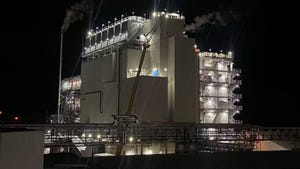Product Focus: On the cutting edge of special effects
August 23, 2008
|
Only 10 years ago, Apple made waves with its iMac G3, which featured a translucent tinted housing molded from polycarbonate. Soon, colors with names such as blueberry, kiwi, raspberry, and mango started showing up on a host of plastic products.
Since that time, colorant technology has burgeoned into a brave new world of special effects. Most recently, Bayer MaterialScience (BMS; Pittsburgh, PA) introduced nine new shades of its Fantasia line of colorants and special effects using Leda compounded color technology, all aimed at reproducing a look or a mood.
The newest additions to the Fantasia line signal a shift in color trends, whose mercurial changes are chronicled and forecast by the Color Marketing Group, Pantone, and others. Currently, consumers seem drawn to complex metallics and bold, in-your-face palettes, according to John Skabardonis, Fantasia Color Technologies Manager.
?Color trends indicate that metallic colors are getting darker, yet at the same time more chromatic through the addition of subtle, and sometimes not-so-subtle, coloration,? he says. ?We?ve also developed colors that are a direct response to the edgy, innovative options designers demand for their products. Keep in mind that this is just the starting point for these colors. Our goal is to help our customers visualize their unique color, and we can, and do, customize these effects to suit our customers? requirements, applications, and needs.?
New metallics that include Aster metal flake additives are:
Area 51, a color-shifting dark metallic color with a nickel-like hue that combines flashes of greens, golds, and purples.
Cadet, a lustrous metallic gunmetal with a cold blue edge.
Iguana, a green on the edge of gray with metallic flash.
Bold colors high on consumer demand lists are:
Goji Berry, a muted, Asian-inspired red.
Grotto, a very dark blue.
Stilettos, a rich red that takes on a red lacquer or patent leather-like gloss when used with polycarbonate.
Tickle, a very light and powdery pink.
Torte, a deep chocolate brown.
Traffic, a yellow with a hint of orange, similar to traffic lines painted on roadways.
To help designers select these and other colors more accurately, BMS is now supplying color samples that incorporate several different types of surfaces in a three-dimensional form. Called a ?chair form? because it resembles a lounge chair, the samples are 7.5 inches long by 2 inches wide and include a complex curve, a flat area, a textured area, and a cutout.
Skabardonis explains, ?A flat color chip doesn?t effectively represent a real product design. When designers are trying to visualize what a product is going to look like, they need to see a three-dimensional object. These new chair forms are larger and more useful than flat chips to designers, who will now have the opportunity to visualize a specific color or effect over a larger, more complex area.?
He adds that the sample will look different depending on whether an opaque, translucent, or transparent colored plastic is used to mold it. Transparency, light scattering, and other optical qualities can be gauged by a BMS logo on the back of the chair form, and the flat area can be used with a spectrophotometer to obtain a color measurement.
By adding a cutout to the sample, BMS hopes to address potential flow and weldline issues so that customers are fully informed during the design process. If there are issues, explains Skabardonis, seeing them in the sample will give customers time to design the tool to minimize them or move them to less visible areas.?MM
Bayer MaterialScience
www.bayerfantasia.com
You May Also Like




